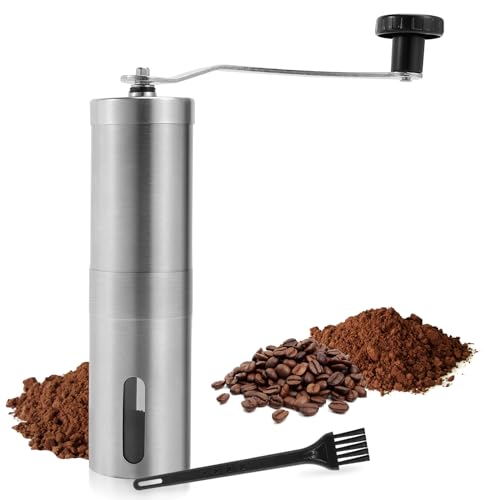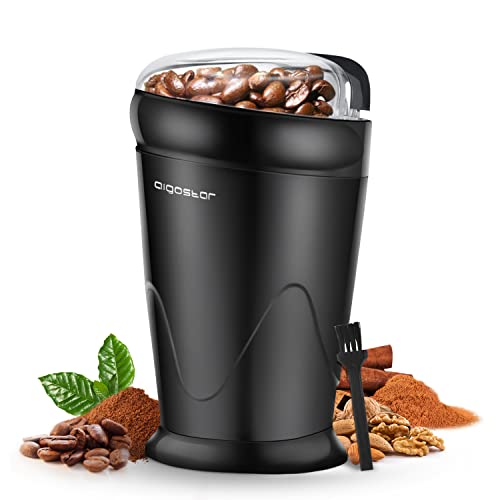See What Stainless Steel Grinder Tricks The Celebs Are Using
페이지 정보
작성자 : Izetta
조회수 : 11회
작성일 : 24-11-10 05:50
본문
 Getting the Most Out of a Stainless Steel Grinder
Getting the Most Out of a Stainless Steel GrinderStainless steel is known for its strength, corrosion resistance and attractive luster. The material can develop surface contaminants, including burrs, during grinding and finishing. Grinding and finishing can eliminate these flaws, improving the appearance and functionality of the metal.
One of the most common errors is to jump right into the grinding or finishing process without proper surface preparation. This can lead to an uneven finish or a dull appearance.
Selecting the right abrasive
When working with stainless steel grinder steel, the abrasive you employ is just as important as any other cutting or drilling tool in your shop. The correct abrasive is the difference between a decent and exceptional job. This is especially applicable when it comes to time to grind and finish.
The wrong abrasive can cause corrosion to the stainless surface. It may also lead to excessive heat buildup that causes blueing or other discoloration. Fabricators should use abrasives that are specifically designed for stainless steel in order to keep this from happening. The ideal is for these abrasives to be made with zirconia or ceramic, which are stronger and more durable than aluminum oxide.
To grind, it's a good idea to choose the highest quality grit available. This will avoid accidental grinding of the metal and reduce the number of visible scratches. Fabricators must be mindful to avoid applying too much force when they are grinding. Excessive pressure could cause the abrasive to overheat, transferring iron or steel particles to the surface of the stainless. This can lead to blueing that is difficult to get rid of.
Finally, when it comes to polishing and finishing fabricators should be careful not to transfer any iron or steel to the surface of the stainless. This can be accomplished by avoiding carbon steel tools like punches and hammers, as well as abrasives utilized on other metals. It is also a good idea to ensure that the abrasive disc wheel is running at the recommended rpm of the manufacturer. This will prevent overheating, and will prolong the life of the abrasive.
Surface preparation
Stainless steel is well-known for its strength, durability to corrosion, and appealing luster, but it must undergo proper grinding and finishing in order to attain these advantages. Surface preparation ensures that the steel is clean, free of contamination and is ready for paint or other coatings. In order to complete this vital step, fabricators use a range of equipment like angle grinders coffee that are equipped with flap discs for grinding and polishing.
A common error is to prepare the surface improperly or not at all. This could affect the result of grinding. Before beginning, the metal should be thoroughly examined to ensure it is free of any contaminants or residues which might hinder the bonding process. If needed solvent cleaning or sanding may be used to remove any contaminants.
If the material will be used in a high temperature application, it should be made from martensitic grades such as 309 (23% chrome and 14% Nickel) and 351 (12 20 % chromium and 20% nickel). It should also be heated treated after fabrication to harden the steel, then quenched to stop tempering, and then buffed using coarser grit abrasives before moving to finer grits for final smoothing and polishing.
When you are performing this crucial process it is crucial to keep in mind that overheating is an important danger for stainless steel. This can cause the stainless steel to lose its protective layer, making it susceptible to corrosion and weakening. Fabricators should grind at a slower speed and apply pressure to avoid overheating. They should check their work and stop when they are sure that they're not wearing away too much metal. They must also ensure that the abrasive is moving over the surface, instead of letting it sit for too long.
Using the Right Tool
Finishing and grinding stainless steel requires specific tools. Making the wrong choice of tool could cause damage to the metal. For example the use of a wheel that has closed-coat aluminum oxide abrasive grains on stainless steel can cause cross-contamination and weaken the steel's resistance to corrosion. It's important to use the right tool to deal with both the heat and the speed of the task.
Using an angle best burr grinder with a flap disc specifically designed for stainless steel is an ideal method to lower the chance of overheating the material during the grinding process. Flap discs that are made of ceramic abrasive grain are better, as they grind stainless steel faster and thoroughly while resisting excessive heat and friction.
Another way to limit the buildup of heat is to change the pattern of grinding often. For instance when grinding down a butt joint welding, an operator may want to traverse the area in short up-and-down motions instead of grinding in one place for too long.
The Herb Ripper grinder from Iaso Goods features US-made, stainless steel food grade 304 and comes with a micro-screen, ball agitator, and a pollen scraper to make it easy to collect kief. This grinder features a top-quality, durable neodymium magnetic for a reliable spin.
In light of the fact that grinding, finishing, and cleaning for passivation usually occur far downstream in fabrication facilities and are done shortly before the finished product is shipped out to the market and improving these processes could reduce the cost of waste and work. A combination of understanding and preventive measures, can make the process as smooth as it can be and result in a polished, flawless final product. The most common mistakes and pitfalls to avoid when working with stainless steel are contamination, overheating as well as abrasive selection and improper surface preparation.
Cooling the Metal
To keep stainless steel resilient and beautiful, it must be treated properly. This includes the proper cutting, welding, and machining, but also grinding and finishing for passivation. This happens far downstream in fabrication and, if done incorrectly, can cause failures in the finished product. This is why it's crucial to be aware of the nuances of working with stainless steel and employ specific equipment and precautionary measures designed to protect its special properties.
To decrease heat and ensure that the abrasive retains its integrity, it is vital to cool the metal prior grinding it. This is accomplished by the use of a cooling agent, such as water or oil miscible coolant. Both are excellent for lubrication and they aid in dispersing heat. They can also help to reduce oxidation of the workpiece as well as reduce the amount of friction that is generated during grinding.
Another method to cut down on heat is to alter the speed at which the abrasive is used. This helps to maintain an even cut and prevent overheating of the material. Additionally, the coffee grinder must be moved in quick upward and downward motions to ensure that it doesn't stay in one place for too long. This is particularly important for large fillet weldings, in which one motion could overheat the entire area.
Finally, it is important to monitor the swarf created during grinding and to ensure that the cooling agent is kept free of dust. This is accomplished by making sure that the swarf is removed as quickly as possible and by monitoring the concentration of the cooling agent with the aid of a refractiveometer. This prevents contamination and will improve machineability and quality of finish.
Safety
The stainless steel industry is known for its resilience and beautiful luster, but it also requires careful handling to get the best espresso coffee grinder from this metal. A thorough grinding and polishing process is vital to achieve the polished look that will make the metal ready for other tasks, such as welding or painting. It takes a lot of patience and little knowledge to get it right. An incorrect approach can result in disastrous results.
Surface preparation is not sufficient.
Doing a quick grinding or polishing without cleaning the workpiece is a common mistake. This mistake allows contaminants and residues on the surface to be a source of contamination for it, leading to the product becoming degraded. It could also cause the surface to be contaminated with bluing.
Overworking the Stainless Steel
When polishing or grinding operators should be cautious not to overwork the metal because it could damage the surface and degrade the resistance to corrosion. It is for this reason that experienced finishers are cautious. If they see that the stainless steel is getting too hot, they may stop working in one place and move on to another, allowing the first area a chance to cool down.
They also pay attention to spark flow. If the sparks are not visible or do not originate from the front of the abrasive wheel it means that they're not applying enough pressure. This could cause the abrasive wheel glaze, generating excessive heat that could cause blueing, and possibly even breaking through workpieces.
It's also important to wear appropriate personal protection equipment. Wearing gloves, safety goggles or glasses, as well as masks are essential. The mask assists in filtering out fine particles, which can cause irritation to the nose and throat, and the face shield protects eyes from flying debris or sparks.
